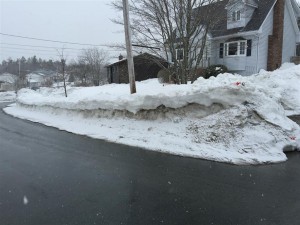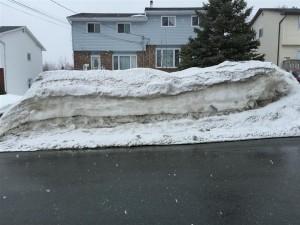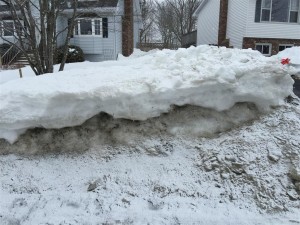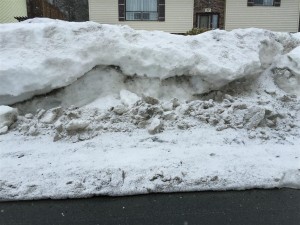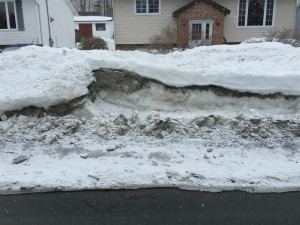Very brief summary of what we do
We do this by “zooming” in on the details of the natural environment and adjusting our investigations accordingly. That is, apply the principles of the semi-empirical – observational, sciences and also that of simple geometry.
This underlies what we do, but we’re not thinking science and geometry as we examine the site of a failure or accident getting our hands dirty and mud on our boots.
An interesting, relevant article
I recently came across an article on fractions, like in arithmetic. More correctly, the article was on fractals. Fractals are an attempt in mathematics to come to terms with the fractured roughness of everyday life, including the natural environment. (Refs 1 and 2)
The article was very relevant to the nature and methods of forensic engineering where the natural environment is involved. For me, learning about this was enjoyable coming as it did shortly after I posted a blog on messy Mother Nature. And how this messiness sometimes results in difficult, “messy” forensic and insurance investigations. (Ref. 3)
Problems in the real world of nature
High school geometry deals with straight lines – think triangles, squares and rectangles, and perfect circles. But in the real world none of these exist. Clouds, trees, soil, and rocks are fragmented, jagged, and fractional. Nature is rough and lumpy – messy. (modified after Ref. 1, page 110)
Describing such real-world things has historically defeated mathematicians. It has also – as I blogged recently – caused problems for forensic engineers investigating failures and accidents involving the natural environment. The devil, it appears, is in the details. (modified after Ref. 1, page 110)
Detailed observation of nature
We have dealt with this problem in engineering with increasingly detailed observation of what we find in nature. For example, more test holes and laboratory tests to characterize the irregular layers of soil existing beneath the site of a failure. (Ref. 3)
Some of our sciences have actually come to be recognized as semi-empirical in nature. You could also say “semi-observational”. For example, soil mechanics, rock mechanics, snow mechanics, ice science, hydromechanics, etc. Medicine is a semi-empirical science. Our analytical procedures and formula are based partly on what we theorize takes place in rough and lumpy nature and partly on what we observe actually takes place there.
Zooming in on the rough details of Nova Scotia
Fractal mathematics is also an attempt to come to terms with the fractured, lumpy roughness of everyday nature by also looking at the details.
An example of its use – possibly unknowingly, would be the measurement of the length of the coast of Nova Scotia.
On a small-scale map, say the highway map of Nova Scotia, the coastline of the province is very uncomplicated. Because the level of detail is low, long stretches of the coastline can be represented with straight lines. To get more detail and a longer, more accurate measure of the coastline you need a larger-scale map – to zoom in, in a sense, and use a ruler with smaller graduations. (after Ref. 1)
This was done by someone, and at the level of detail finally accepted, it was found that Nova Scotia’s coastline is 15% longer – 7,400 km, than Canada is wide – 6,422 km. (N.S. is 575 km long overland from one end to the other). (Ref. 4) Of course, the measurement could have zoomed in closer still and got an even greater distance.
There is really no limit to applying this process of “zooming in” and observing and studying at any level of detail any problem involving the messy, lumpy natural environment. This is often necessary to complete a thorough forensic engineering or insurance investigation. For example, in problems like:
- Characterizing the contour and topography of the site of a failure or accident,
- The depth, contour and physical properties of the layers of soil beneath the site,
- How water drains across the terrain or flows below the surface
- How a plume of contamination migrates across the site of a fuel oil spill
In a forensic engineering or insurance investigation of problems like these and others, the engineer would decide on an adequate level of detail in dealing with rough and lumpy Mother Nature. His decision would be based on the evidence that comes in on completion of the different stages and tasks of the investigation.
References
- Jackson, Tom, ed., Mathematics: An Illustrated History of Numbers, page 110, Shelter Harbour Press, 2012
- Crilly, Tony, 50 Mathematical Ideas You Really Need to Know, page 100, Quercus, 2007
- http://www.ericjorden.com/blog/2015/04/14/the-messiness-of-some-forensic-engineering-and-insurance-investigations-is-illustrated-by-messy-snowbanks/
- Internet, Wikipedia, April 21, 2015, 2:00 pm

